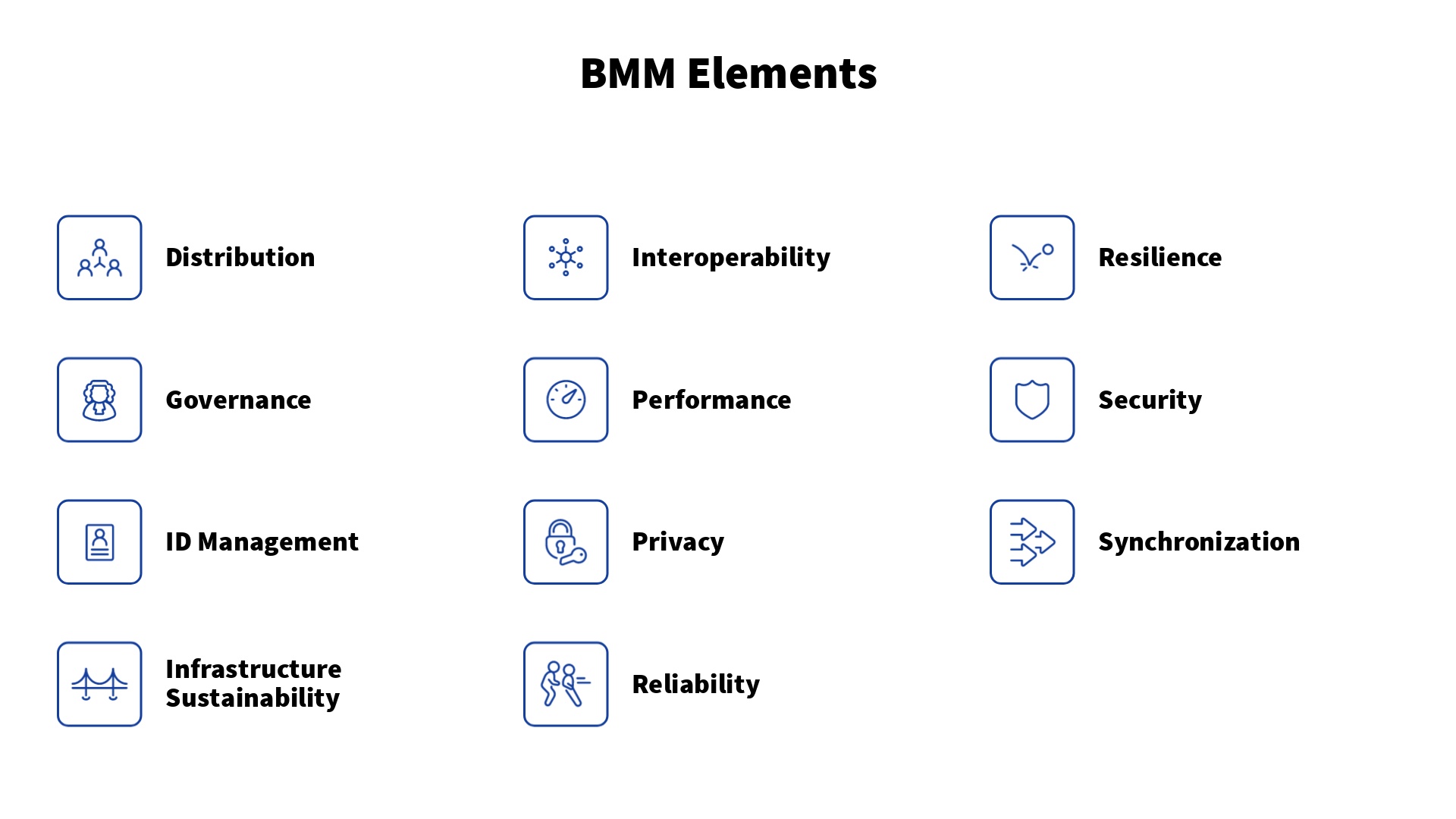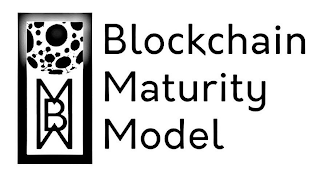Organizations around the world are beginning to acquire blockchain solutions.
The problem is, that they do not have the knowledge or framework to distinguish between a reliable solution and a hyped prototype.
The BMM helps solution providers demonstrate their credibility to potential customers as well as provides a roadmap to continuous improvement.
In some cases, the government can provide financial assistance to use the BMM to improve and demonstrate blockchain solutions.
Download the Blockchain MaturityModel (BMM) Overview Document
Click here to request additional information
Why Get BMM Rated?
The Blockchain Maturity Model (BMM) is the global standard for assessing the trustworthiness of blockchain solutions. It provides both a roadmap for continuous improvement and a credible benchmark for security, performance, governance, and transparency.
Solutions that pass a BMM assessment are published in the GBA Web3 Emerging Technology Directory, a resource shared with over 500 government offices worldwide and promoted through the Dynamic Coalition on Blockchain Assurance and Standardization of the United Nations Internet Governance Forum.
Governments Are Taking Notice
The BMM is a Registerd Certification Mark with the U.S. Patent & Trade Mark Office (USPTO).
In the U.S., Riverside County, California included BMM rating status as a selection factor in a public RFP. Further south, leaders in Mexico are exploring BMM-based evaluations for land records and identity systems. A BMM rating gives buyers, investors, and partners the confidence that your solution meets rigorous, independently verified standards. It helps you build trust, win contracts, and scale globally.
The United Nations Internet Governance Forum Dynamic Coalition on Blockchain Assurance & Standardization is committed to advancing standards and best practices that foster a secure and trustworthy internet ecosystem. As part of this mission, it contributes to the development of industry standards & frameworks such as the Blockchain Maturity Model (BMM) and its corresponding family of standards, which support the assurance and standardization of blockchain technologies.
What is the Structure & Content of the BMM?
The BMM consists of core requirements and domain specific requirements. The core requirements are further divided into functional levels.
What are the BMM Core Requirements
Every blockchain solution should meet a common set of core requirements. For the BMM these core requirements are described as solution elements. They are:

Why Do We Need a Blockchain Maturity Model?
Governments and enterprises around the world are preparing to acquire blockchain solutions. However, most enterprises do not have the knowledge or framework to be able to assess a good blockchain from a bad blockchain. Consequently, they will always default to a traditional solution provider. Newer, agile, and innovative companies cannot compete with traditional government vendors. For this reason, the blockchain maturity model has been established to solve that problem.
What is the Purpose of the Blockchain Maturity Model?
The purpose of this model is to:
- Provide a roadmap to establish, implement, maintain, and continually improve blockchain solutions.
- Demonstrate that a solution can be trusted to meet industry standards.
- Provide acquisition professionals with the information needed to evaluate blockchain solutions.
- Establish the criteria to achieve a Government Blockchain Association (GBA) certification.
Who Developed the BMM?
The BMM was developed by the GBA Standards & Certification Working Group over two years. This group includes 34 individuals from government and the private sector. Members of this group include Chief Information Officers, Chief Technical Officers, engineers, auditors, business executives, & managers.
Frequently Asked Questions (FAQ)s
Frequently Asked Questions (FAQs)
Click on the questions below to get your answers.
Why should my solution be assessed?
BMM assessments serve two purposes. They are:
- Provide insight to solution developers to help them create trusted blackchin solutions that can be trusted to meet stakeholder expectations
- Give confidence to investors, customers, and users in the performance of their due diligence
- Satisfy government and industry Request for Proposal (RFP) requirements
- Support marketing efforts by having solutions listed on reputable directories including the UN IGF Dynamic Coalition on Blockchain Assurance & Standardizationand the Government Blockchain Association List of BMM Rated Solutions
How long does a BMM assessment take?
The assessment is composed of several phases.
The first phase is planning. This can typically happen within two weeks.
The second phase is a self-assessment. This is the big variable. It all depends on how close or far the soluion is to the targeted level of the assement. But, assuming the soluion is close to the BMM goal target, this can be done in about two weeks.
Once the Soluion Point Of Contact (SPOC) has completed the self assessment and sends the results to the Lead Assessor, the assessment team typically takes about one week to review the results from the self-assessment and provides feedback.
After the SPOC and the Lead assessesor have confidence that there is enough evidence to support the condct of the assessment, the interviews are planned and conducted. This usually takes one to two weeks.
After that, the results are reviewed by the Director of Standards and Certification for final review and then the results are published. This typically takes about one week.
So, from start to finish the process typically takes about eight weeks.
How much does a BMM assesmemt cost?
Assessments are perfromed by a team of highly skilled professionals over several weeks. These professionals need to be paid and administrative costs must be covered. While the time requirements vary due to the size and complexity of the solution being assessed, the typical cost is in the tens of thousands of dollars.
Fill out the form at the bottom of this page to request a proposal with pricing.
Do assessment team members get paid?
Assessment team members are paid as senior level professionals. However, the rate of compensation varies by assessment.
How do I become an assesor?
To become a BMM assessor you must:
- Be a GBA member in good standing
- Successfully completed the:
- GBA Blockchain Foundations Course
- GBA BMM Course
- GBA BMM Assessment Team Member Course
- Sign and comply with the GBA published code of conduct
- Sign & comply with the GBA assessment agreement that addresses
- Conflict of Interest
- Confidentiality & non-disclosure
- Intellectual property protection.
- Observe two assessments
Reference:
https://gbaglobal.org/wp-content/uploads/2022/07/03-BMM-Assessment-Requirements-v1.0-Approved.pdf Refer section 1.5.2



